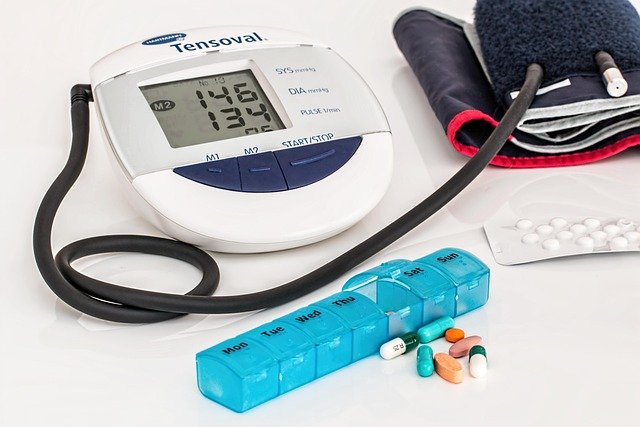Understanding Arteriosclerosis: Causes, Symptoms, and Treatment
Arteriosclerosis is a common cardiovascular condition that affects millions of people worldwide. This progressive disease occurs when the arteries, which are responsible for carrying oxygen-rich blood throughout the body, become hardened and narrowed due to the buildup of plaque. As a result, blood flow to vital organs and tissues is restricted, potentially leading to serious health complications. In this article, we'll explore the causes, symptoms, and treatment options for arteriosclerosis, as well as preventive measures to maintain heart health.

-
High cholesterol levels: Elevated levels of low-density lipoprotein (LDL) cholesterol, often referred to as “bad” cholesterol, contribute significantly to plaque formation.
-
High blood pressure: Hypertension can damage the arterial walls, making them more susceptible to plaque buildup.
-
Smoking: Tobacco use not only damages the lining of the arteries but also increases inflammation and reduces the levels of high-density lipoprotein (HDL) cholesterol, which helps remove excess cholesterol from the bloodstream.
-
Diabetes: High blood sugar levels can damage the arterial walls and promote plaque formation.
-
Obesity: Excess body weight is associated with increased inflammation and other risk factors for arteriosclerosis.
-
Lack of physical activity: A sedentary lifestyle can contribute to the development of other risk factors, such as obesity and high cholesterol.
How does arteriosclerosis affect heart health?
Arteriosclerosis can have significant impacts on heart health and overall cardiovascular function. As the arteries narrow and harden, the heart must work harder to pump blood through the constricted vessels. This increased workload can lead to various complications, including:
-
Coronary artery disease: When arteriosclerosis affects the coronary arteries, which supply blood to the heart muscle, it can result in reduced blood flow to the heart, potentially causing chest pain (angina) or heart attacks.
-
Peripheral artery disease: Arteriosclerosis in the arteries that supply blood to the limbs can cause pain, numbness, and reduced mobility in the affected areas.
-
Carotid artery disease: When the carotid arteries, which supply blood to the brain, are affected, it increases the risk of stroke.
-
Aneurysms: Weakened arterial walls due to arteriosclerosis can lead to the formation of aneurysms, which are bulges in the artery that can rupture and cause life-threatening bleeding.
What are the symptoms of arteriosclerosis?
One of the challenges in diagnosing arteriosclerosis is that it often develops silently over many years without noticeable symptoms. However, as the condition progresses, some signs may become apparent:
-
Chest pain or pressure (angina), especially during physical activity or emotional stress
-
Shortness of breath or difficulty breathing
-
Weakness or numbness in the legs or arms
-
Slow-healing wounds on the toes, feet, or legs
-
Erectile dysfunction in men
-
High blood pressure
-
Fatigue or general weakness
It’s important to note that these symptoms may not appear until arteriosclerosis has significantly advanced. Regular check-ups and screenings are crucial for early detection and prevention of complications.
How is arteriosclerosis diagnosed and treated?
Diagnosing arteriosclerosis typically involves a combination of physical examinations, medical history reviews, and diagnostic tests. Common diagnostic procedures include:
-
Blood tests to check cholesterol levels and other cardiovascular risk factors
-
Electrocardiogram (ECG) to assess heart function
-
Stress tests to evaluate heart performance during physical activity
-
Imaging tests such as ultrasound, CT scans, or angiograms to visualize the arteries and identify areas of narrowing or blockage
Treatment for arteriosclerosis aims to slow or halt the progression of the disease and reduce the risk of complications. Treatment options may include:
-
Lifestyle changes: Adopting a heart-healthy diet, increasing physical activity, quitting smoking, and managing stress are essential components of treatment.
-
Medications: Various drugs may be prescribed to lower cholesterol levels, control blood pressure, prevent blood clots, or manage other risk factors.
-
Surgical procedures: In severe cases, interventions such as angioplasty, stent placement, or bypass surgery may be necessary to restore blood flow in affected arteries.
Can arteriosclerosis be prevented?
While some risk factors for arteriosclerosis, such as age and family history, cannot be changed, many preventive measures can be taken to reduce the likelihood of developing this condition:
-
Maintain a healthy diet: Focus on consuming fruits, vegetables, whole grains, lean proteins, and healthy fats while limiting saturated fats, trans fats, and excessive salt intake.
-
Exercise regularly: Aim for at least 150 minutes of moderate-intensity aerobic activity or 75 minutes of vigorous-intensity aerobic activity per week.
-
Quit smoking: If you smoke, seek support to quit. Avoiding secondhand smoke is also important.
-
Manage stress: Practice stress-reduction techniques such as meditation, yoga, or deep breathing exercises.
-
Control other health conditions: Properly manage conditions like diabetes, high blood pressure, and high cholesterol through medication and lifestyle changes as recommended by your healthcare provider.
-
Maintain a healthy weight: Losing excess weight can significantly reduce the risk of arteriosclerosis and its complications.
-
Limit alcohol consumption: If you choose to drink alcohol, do so in moderation.
By understanding the causes, symptoms, and treatment options for arteriosclerosis, individuals can take proactive steps to protect their heart health and reduce the risk of cardiovascular complications. Regular check-ups, a healthy lifestyle, and early intervention when necessary are key to maintaining optimal arterial function and overall well-being.
This article is for informational purposes only and should not be considered medical advice. Please consult a qualified healthcare professional for personalized guidance and treatment.






